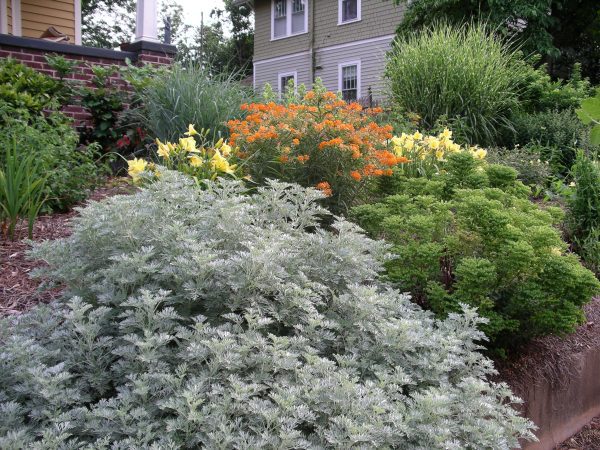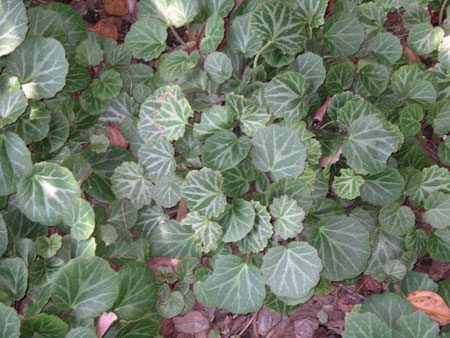Tired of watering? Xeriscape.

Despite recent rains, the Uwharries have experienced abnormally dry to moderate drought conditions for much of the summer. This isn’t unusual for our region. According to the N.C. Drought Management Advisory Council, our conditions ranged from abnormally dry to extreme drought in four of the past five summers.
Days in the upper 90s and weeks with spotty rain – what an inspiration to garden! Seriously, this kind of weather (and the lack of an irrigation system) prompted me to learn about xeriscaping – a method of gardening that minimizes water usage. It doesn’t mean you’re restricted to cactus and gravel. With a little work and careful planning, I managed to have lush cottage gardens that required little or no supplemental water. I saved time and money, and I wasn’t affected by watering restrictions.
Proper soil preparation is the basis of xeriscaping. Aim to dig or till at least a foot deep and then incorporate copious amounts of compost. This loosens our red clay and helps it absorb and retain moisture. A thick layer of mulch is also essential – it keeps soil temperatures consistent and cuts down on evaporation. I’ve used pine needles, pine fines and composted leaves. Each has pros and cons regarding cost, aesthetics, durability and ease of application.
A trip to a nursery or garden center can be overwhelming. With so many plants available, it can be difficult to narrow selections. Samuel Taylor Coleridge defined poetry as the best words in the best order. I think of gardening as a form of poetry – the best plants in the best order. For me, the best plant isn’t a rare specimen or the latest cultivar or a plant that has to be pampered because it’s marginal in our area, but rather the one that thrives in a particular spot without becoming too aggressive. As for the best order, that’s the art of gardening. Thousands of books have been written on this topic, but for guidance, I turn to the wisdom of St. Augustine. His simple advice: “Love God, and do as you please.” I believe if you choose the right plants, you’re free to arrange them any way you like.
 Dry shade can be one of gardening’s biggest challenges, but I didn’t know that when I started working on an area underneath the canopy of a stately willow oak in Charlotte. I learned to xeriscape by trial and error, i.e. killing a lot of plants. I eventually achieved a nice spring bloom. I ripped out every sprig of ivy and replaced it with evergreen groundcovers that flower, such as Lenten rose, green and gold, strawberry begonia, ajuga, woodland phlox and epimedium. Bulbs do well if their foliage ripens before the canopy leafs in. I had a scattering of crocus, narcissus, scilla, muscari and lycoris. Pink hyacinths from my grandmother’s garden multiplied over the years. A previous owner had planted peonies, perhaps years earlier, before the tree cast so much shade. The peonies were floppy, but I didn’t have the heart to move them. I surrounded them with blue bellflowers and dark pink Chinese foxgloves, and they were glorious.
Dry shade can be one of gardening’s biggest challenges, but I didn’t know that when I started working on an area underneath the canopy of a stately willow oak in Charlotte. I learned to xeriscape by trial and error, i.e. killing a lot of plants. I eventually achieved a nice spring bloom. I ripped out every sprig of ivy and replaced it with evergreen groundcovers that flower, such as Lenten rose, green and gold, strawberry begonia, ajuga, woodland phlox and epimedium. Bulbs do well if their foliage ripens before the canopy leafs in. I had a scattering of crocus, narcissus, scilla, muscari and lycoris. Pink hyacinths from my grandmother’s garden multiplied over the years. A previous owner had planted peonies, perhaps years earlier, before the tree cast so much shade. The peonies were floppy, but I didn’t have the heart to move them. I surrounded them with blue bellflowers and dark pink Chinese foxgloves, and they were glorious.
Early summer is a quiet time in the dry shade garden. Hardy begonias are one of few plants in bloom. I tried to focus on foliage for color, texture and form. Variegated plants are indispensible – Solomon seal, heuchera, sweet flag and hostas. Ferns are usually associated with riparian areas, but many tolerate dry conditions. Cast iron plant is as tough as its name.
By late summer and well into fall, the garden erupts with another flush of blooms. Native woodland asters aren’t as showy as their roadside cousins, but their delicate flowers last for months. I got a lot of mileage out of a couple eupatoriums, cousins of our common Joe Pye weed. Wild ageratum will seed freely without becoming a nuisance, and chocolate snakeroot makes a statement with its dark foliage and bright white flowers. Pink and white Japanese anemones are a nice addition to this cast of natives, as are the exotic, orchid-like blooms of toad lilies.
Another way to xeriscape is to cluster plants that require more water. I used a small, circular-spray sprinkler on occasion to keep parts of my shade garden at peak condition, but my sunny garden in Raleigh didn’t get a drop of supplemental water once the plants were established.
There, my color scheme was inspired by the yellow, pink and orange blooms of “Miss Huff” lantana. The switchgrass I had chosen primarily for its blue foliage produced seed heads that echoed this combination. I used a miscanthus with creamy, horizontal bands and repeated the colors with a variegated yucca. Several tough and attractive natives were right at home in a cottage garden – coneflowers, goldenrod, butterfly weed, phlox and baptisia. (I’m sorry I didn’t include a salvia or two.) Euphorbia was an anchor plant, and daylilies filled in gaps. Plants with silvery foliage reflect more light and are especially drought tolerant, so I included Jerusalem sage, yarrow and artemisia “Powis Castle” which grew as large as a kiddie pool. I knew forsythia and winter jasmine were indestructible shrubs, but I took a chance on creeping gardenias, and they were as tough as steel magnolias.
I like to let nature take responsibility for watering my flowers. I’d rather kick back on the porch and sip a refreshing beverage.
For more information about xeriscaping, visit the N.C. Cooperative Extension Service website at www.ces.ncsu.edu or contact their office in your county. Click here for a list of their offices.